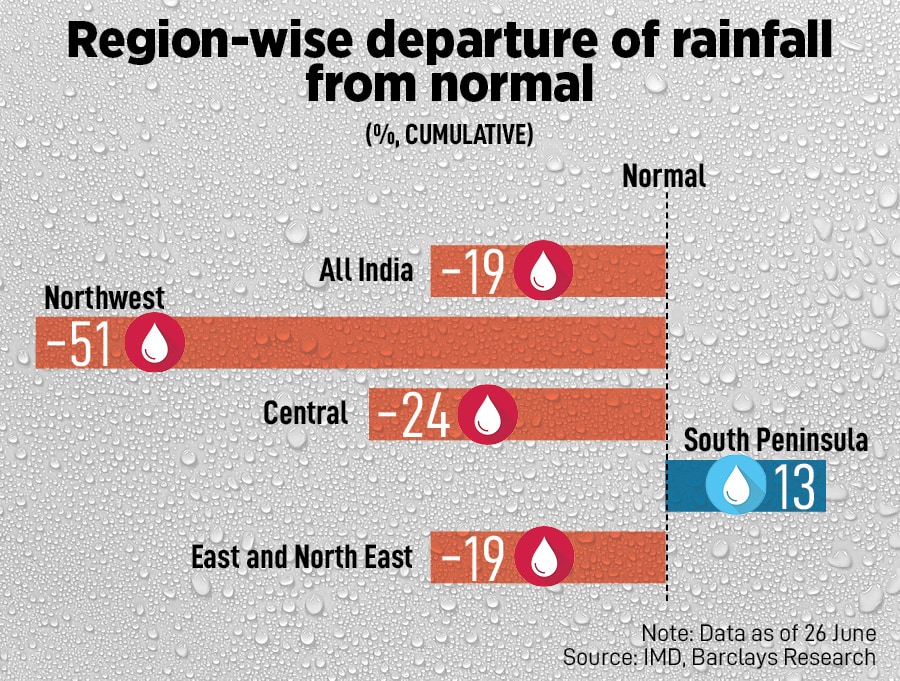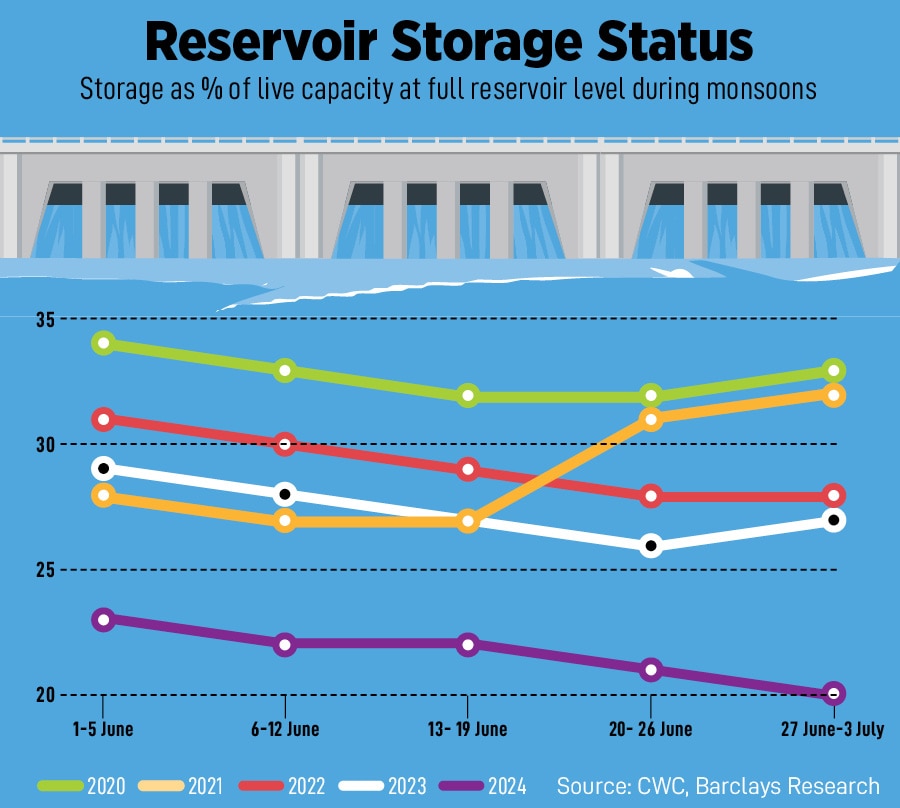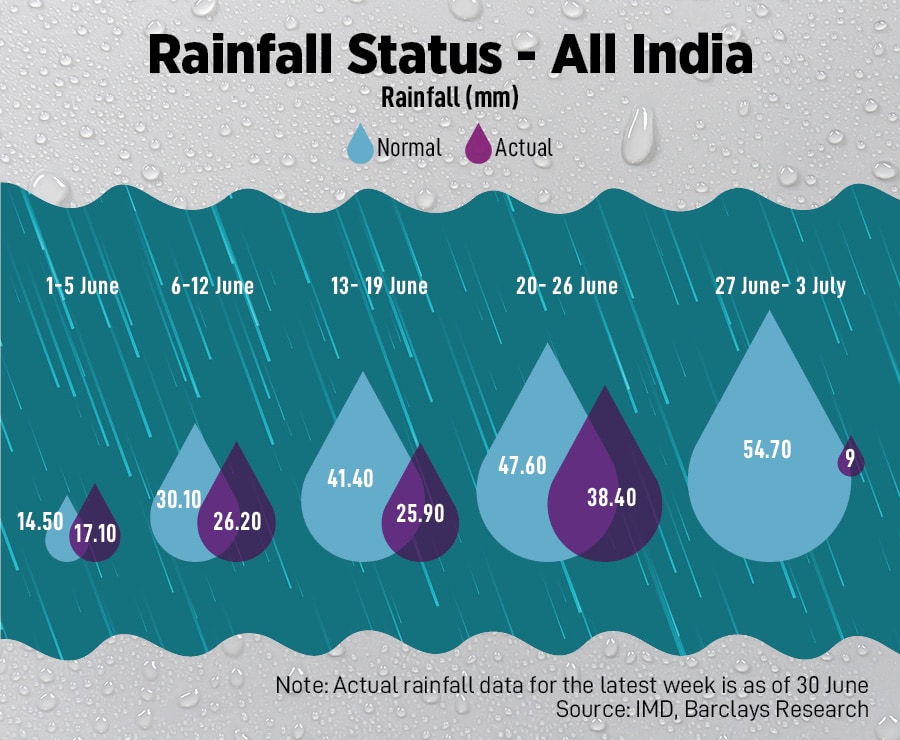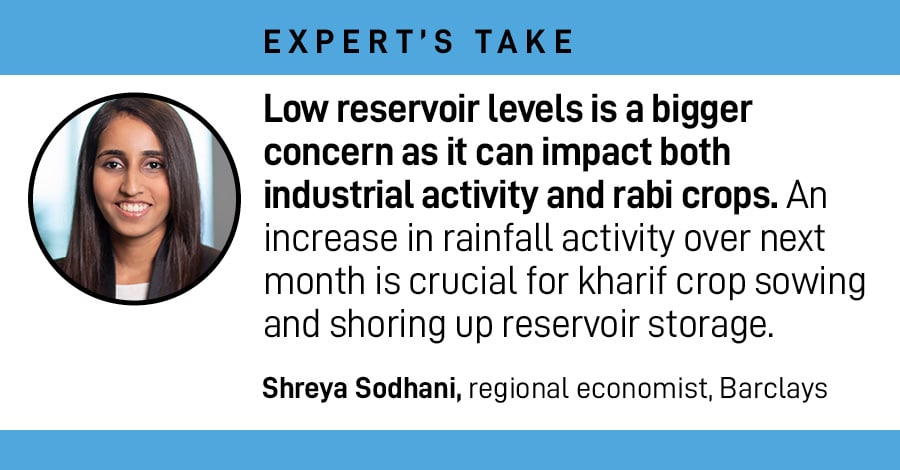Rain Watch for June 27 to July 3: Monsoon picks pace, low water level risky
Rainfall has covered the country six days in advance this monsoon, but depleting water reservoir levels and a delay in the sowing of kharif crops are causes for concern
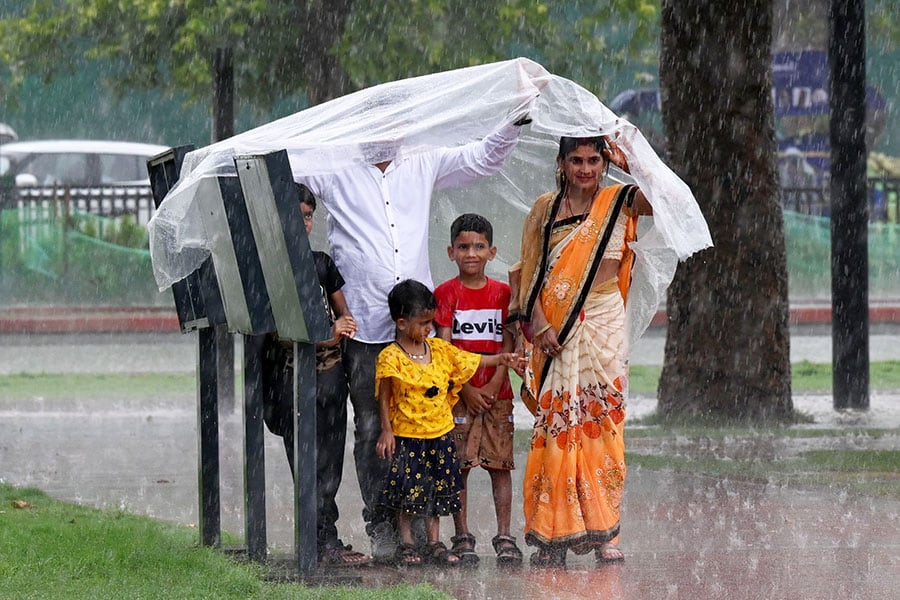 People enjoying rain at Kartavya Path on June 29, 2024 in New Delhi, India. Image: Sonu Mehta/Hindustan Times via Getty Images
People enjoying rain at Kartavya Path on June 29, 2024 in New Delhi, India. Image: Sonu Mehta/Hindustan Times via Getty Images
Even as overall rainfall is still below normal this monsoon, its intensity has picked up pace. In the last week of June, rainfall has covered almost entire country but continued low levels of water in reservoirs remain a concern.
As of June 30, rains were 11 percent below the long-period average (LPA) on a cumulative basis, based on Indian Meteorological Department (IMD) data analysis by Barclays. In the previous week ended June 23, rainfall deficit was at 18 percent.
Region wise, northwest has a 51 percent deviation from normal rainfall, east and north east at 19 percent deficient rainfall while only southern peninsula has a surplus of 13 percent.
